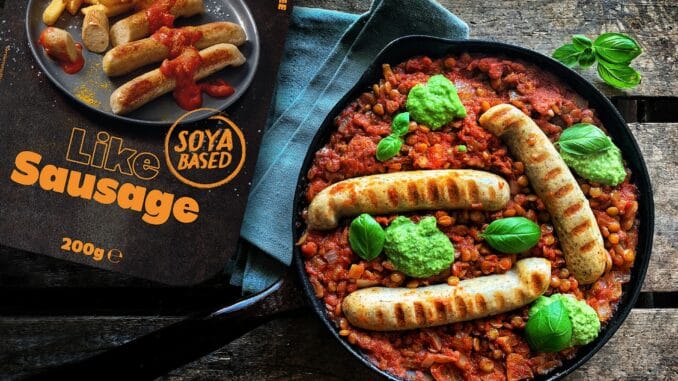
In recent years, the rise of vegetarianism, veganism, and flexitarianism has led to a growing demand for meat substitutes. The production of meat substitutes presents an exciting business opportunity for entrepreneurs looking to capitalize on this trend. This article will explore the possibility of making money from the production of meat substitutes, discuss potential risks, and provide some examples of recipes.
Justifying the Possibility of Making Money
1) Growing Demand. The global demand for meat substitutes is on the rise, driven by factors such as health consciousness, environmental concerns, and ethical considerations. According to a report by Grand View Research, the global meat substitutes market size was estimated at USD 12.95 billion in 2022 and is expected to grow at a compound annual growth rate (CAGR) of 43.6% from 2023 to 2030. This burgeoning market presents significant opportunities for both established companies and startups.
2) Health and Environmental Benefits. Meat substitutes offer several health benefits, including lower cholesterol and saturated fat content, reduced risk of heart diseases, and increased intake of plant-based nutrients. Additionally, the production of meat substitutes requires fewer resources, decreases greenhouse gas emissions, and reduces the strain on land and water resources. Consumers who prioritize health and sustainability are willing to pay a premium for these products, creating a profitable market niche.
3) Diversified Consumer Base. Beyond vegans and vegetarians, the demand for meat substitutes is increasingly driven by flexitarians, who are actively reducing their meat consumption. This expanding consumer base presents a lucrative market for innovative products that replicate the taste and texture of meat.
4) Technological Advancements. Advances in food science and technology have revolutionized the production of meat substitutes. Companies now use plant-based proteins like soy, peas, and mushrooms to create realistic and appealing meat alternatives. This technological progress ensures that the taste, texture, and nutritional profiles of meat substitutes are continuously improving, helping to attract more consumers.
Potential Risks
1) Regulatory Challenges. As with any food product, the production and marketing of meat substitutes are subject to regulations and standards. Different countries may have varying guidelines, making it essential to navigate through regulatory hurdles to ensure compliance.
2) Competitive Landscape. The meat substitute market is becoming increasingly crowded, with many companies vying for market share. While this indicates a growing demand, it also means that new entrants will face fierce competition.
3) Consumer Acceptance. Despite the rising popularity of meat substitutes, some consumers may be hesitant to switch from traditional meat. Overcoming skepticism and convincing consumers of the taste, nutrition, and environmental benefits of meat substitutes can pose a challenge.
4) Sourcing Sustainable Ingredients. The production of meat substitutes requires a consistent supply of plant-based proteins. Securing sustainable and cost-effective sources of quality ingredients may prove challenging as competition within the industry intensifies.
Sample Recipes
To whet your appetite, here are two mouthwatering recipes featuring meat substitutes:
Recipe 1: Meat Burger
Ingredients:
- 1 cup cooked black beans
- 1 cup cooked chickpeas
- 1 cup vital wheat gluten
- 1/2 cup nutritional yeast
- 1/4 cup soy sauce
- 2 tablespoons tomato paste
- 1 teaspoon smoked paprika
- 1 teaspoon garlic powder
- 1 teaspoon onion powder
- 1/2 teaspoon liquid smoke
- Salt and pepper to taste
Instructions:
1. In a food processor, blend the black beans and chickpeas until mostly smooth.
2. In a mixing bowl, combine the blended beans, vital wheat gluten, nutritional yeast, soy sauce, tomato paste, smoked paprika, garlic powder, onion powder, liquid smoke, salt, and pepper. Mix until well combined.
3. Knead the mixture for a few minutes until gluten strands develop, and the mixture becomes firmer and stretchier.
4. Divide the mixture into desired patty sizes and shape into burger patties.
Cooking:
1. Cook the patties on a preheated grill, skillet, or oven until browned and cooked through, flipping once during cooking. Cooking times may vary.
2. Serve the Beyond Meat burgers on buns with your favorite toppings and condiments.
Recipe 2: Meat Sausage
Ingredients:
- 2 cups cooked lentils, drained
- 1 cup rolled oats
- 1/2 cup chopped walnuts
- 1/4 cup tomato paste
- 3 tablespoons soy sauce
- 2 tablespoons nutritional yeast
- 1 tablespoon maple syrup
- 1 teaspoon smoked paprika
- 1/2 teaspoon fennel seeds
- 1/2 teaspoon dried thyme
- 1/2 teaspoon garlic powder
- 1/2 teaspoon onion powder
- Salt and pepper to taste
Instructions:
1. In a food processor, pulse the cooked lentils until roughly chopped.
2. In a mixing bowl, combine the chopped lentils, rolled oats, chopped walnuts, tomato paste, soy sauce, nutritional yeast, maple syrup, smoked paprika, fennel seeds, dried thyme, garlic powder, onion powder, salt, and pepper. Mix until well combined.
3. Allow the mixture to rest for about 15 minutes to let the oats absorb some moisture.
4. Shape the mixture into sausage shapes and wrap each sausage in aluminum foil.
Cooking:
1. Place the wrapped sausages on a baking sheet and bake in a preheated oven at 375°F (190°C) for about 20-25 minutes, or until firm and cooked through.
2. Remove from the oven, unwrap the sausages, and serve with your desired accompaniments.
These recipes are simplified versions. However, they can give you a good starting point to understand the basic concept of making meat substitutes using plant-based ingredients.